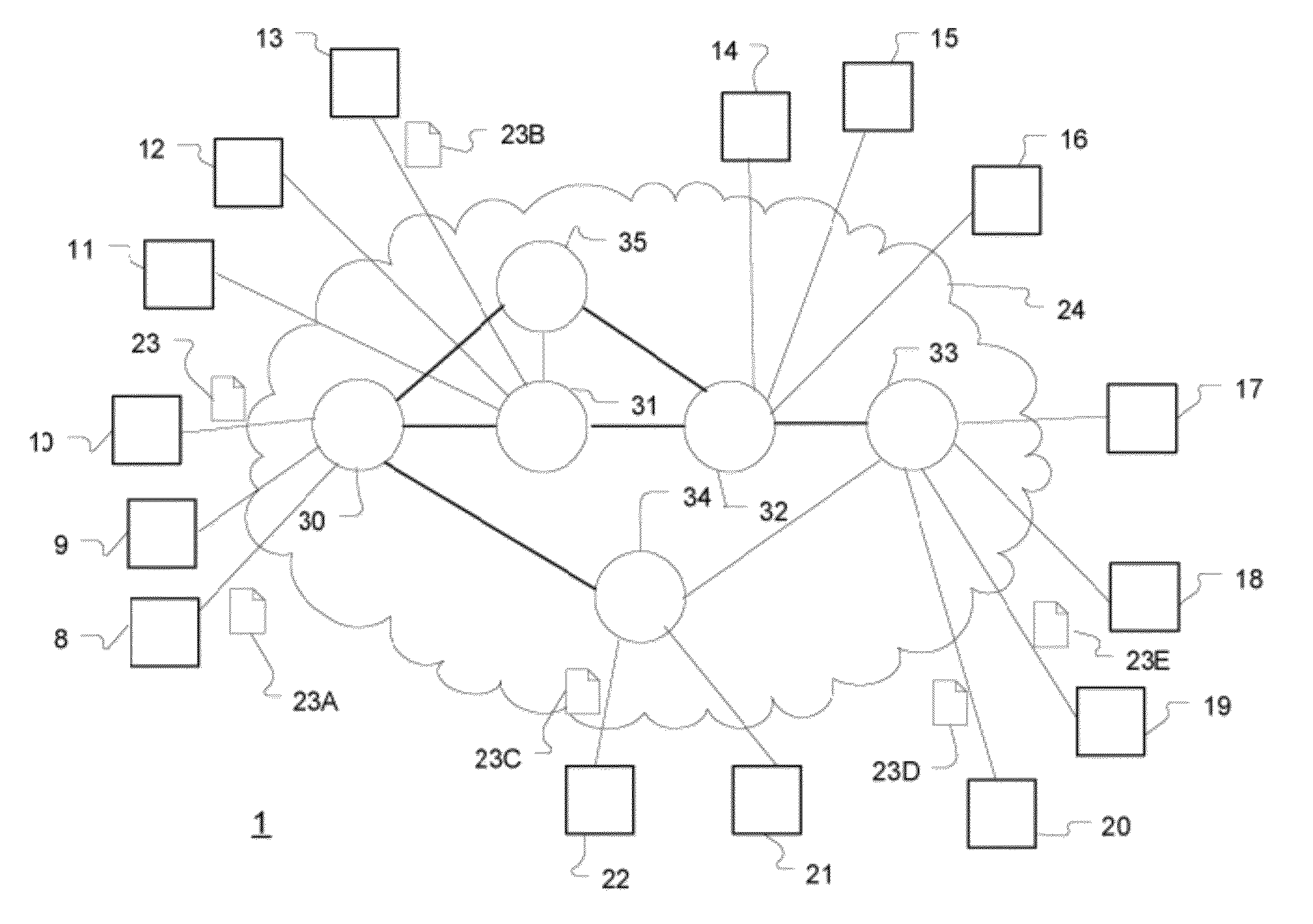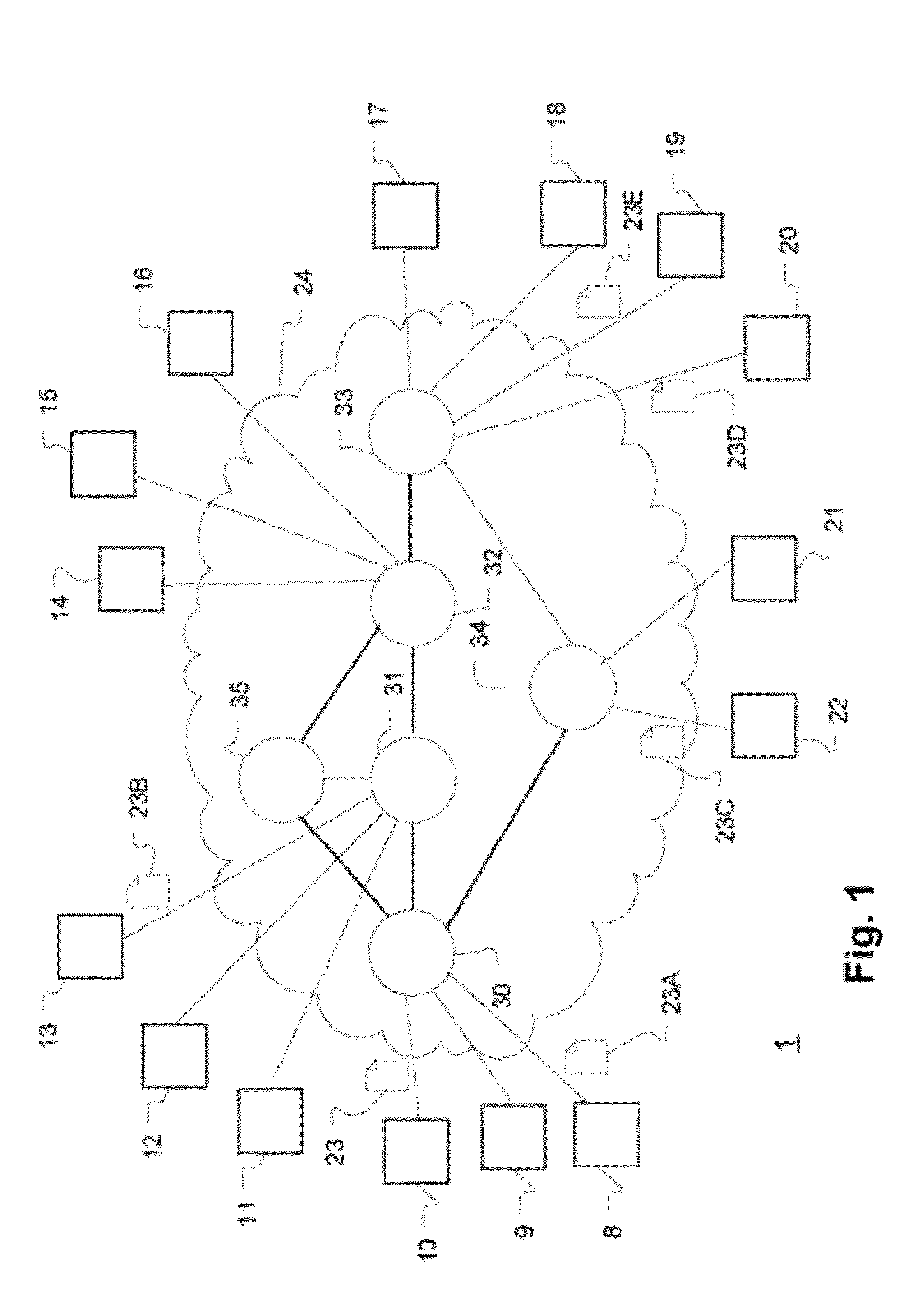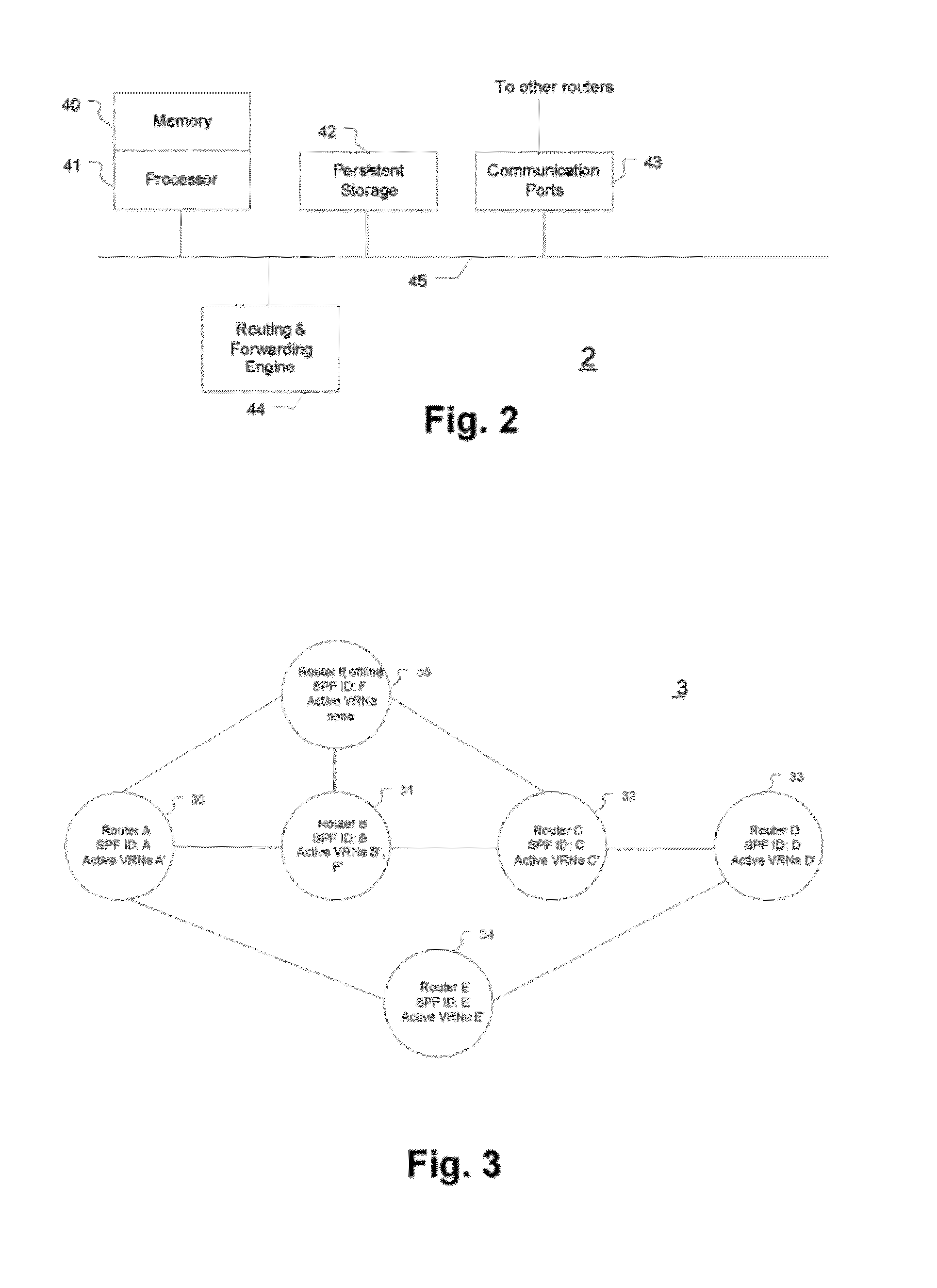Subscription Management and Routing Protocol (SMRP) and Method
a subscription management and routing protocol technology, applied in the field of data communication networks, can solve the problems of network bandwidth consumption, inability to maintain the s, g state of the router, and high cost in end-to-end latency, so as to optimize the utilization of network bandwidth and minimize the network overhead of advertising
- Summary
- Abstract
- Description
- Claims
- Application Information
AI Technical Summary
Benefits of technology
Problems solved by technology
Method used
Image
Examples
Embodiment Construction
[0044]FIG. 1 shows an example system 1 which consists of a message delivery network 24 which is providing a scalable, distributed multicast message delivery service, as well as clients for the service. Network 24 consists of message delivery routers 30 through 35, which can be flexibly deployed in various different networks topologies, with an example topology shown in FIG. 1. An example of a device, which can serve as router 30 through 35, is the 3260 Message Router from Solace Systems, Inc. Note that routers 30 through 35 may be deployed as an overlay to an underlying network, such as an IP / MPLS network, or other communications networks as is known in the art. Connected to network 24 is a plurality of messaging applications or clients 8 through 22, which may be any type of device or software which wishes to send and receive messages, with the message delivery to the one or more recipients being provided by network 24. Note that while only a small number of clients are shown, such ...
PUM
 Login to View More
Login to View More Abstract
Description
Claims
Application Information
 Login to View More
Login to View More - R&D
- Intellectual Property
- Life Sciences
- Materials
- Tech Scout
- Unparalleled Data Quality
- Higher Quality Content
- 60% Fewer Hallucinations
Browse by: Latest US Patents, China's latest patents, Technical Efficacy Thesaurus, Application Domain, Technology Topic, Popular Technical Reports.
© 2025 PatSnap. All rights reserved.Legal|Privacy policy|Modern Slavery Act Transparency Statement|Sitemap|About US| Contact US: help@patsnap.com



